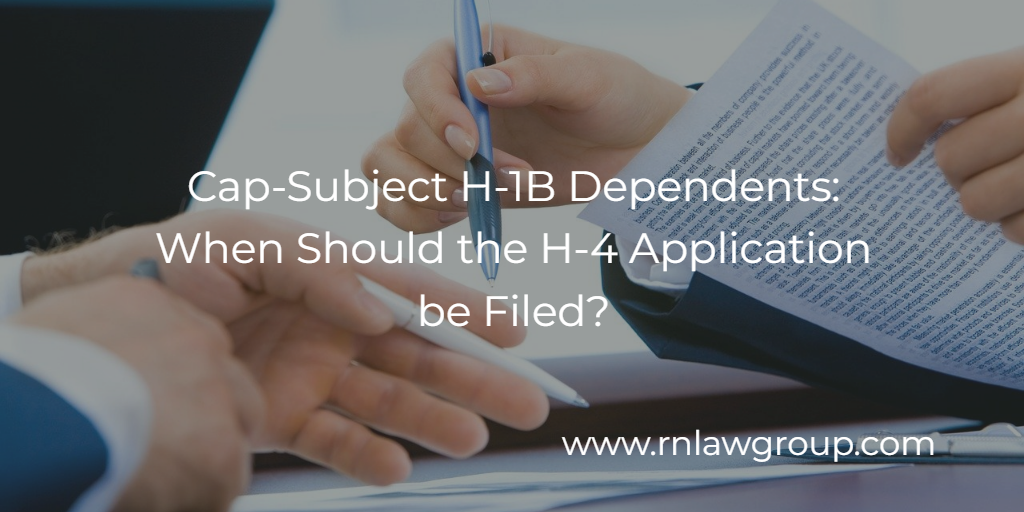
Cap-Subject H-1B Dependents: When Should the H-4 Application be Filed?
Cap-subject H-1B applicants who have been selected in the March lottery should be aware of if and when H-4 visa applications need to be filed on behalf of their dependent family members in the U.S.
For spouses of H-1B applicants who have their own independent visa status, such as F-1 or H-1B, a change of status to H-4 is not needed if the spouse intends to continue in their current nonimmigrant status. For family members who are currently on a dependent visa, such as F-2, L-2, TD, or E-3D, they will need to file I-539 applications to request a change of their status to H-4, prior to the H-1B change of status taking effect, which should be October 1 if the H-1B petition is approved by then. The best time to submit the I-539 application would be concurrently with the I-129 petition, to ensure it is not missed.
If however, the H-1B beneficiary’s spouse or children cannot file the I-539 application concurrently with the H-1B petition for some reason (for example, if they are traveling internationally at the time the I-129 petition is filed), the I-539 can be filed separately, but must be submitted to USCIS before the H-1B status change takes effect on October 1. Once the H-1B holder’s status changes, if their I-539 application has not already been filed and pending, the spouse and/or children who were previously in F-2, F-2, L-2, TD, or E-3D will be effectively out of status.
Even if the H-4 application is filed concurrently with the H-1B petition, please note that the I-539 application will likely be pending for several months after the H-1B approval, due to longer I-539 processing times and lack of a premium processing option for H-4 applications at this time. As long as the I-539 form was filed prior to the H-1B change of status taking place though, the H-4 applicant can remain in the U.S. beyond October 1 in a period of authorized stay, while they wait for the I-539 to be approved.
Spouses who currently have an EAD based on their status (such as L-2, E-2, or E-3D) should also be aware that they may no longer be authorized to work once their status changes to H-4. EADs for H-4 visa holders are only available in limited situations (if the green card process has reached a certain stage for the H-1B beneficiary), and would require a separate I-765 application. Spouses with current work authorization should therefore be aware of when their EAD will no longer be valid, to avoid any unauthorized employment.
Ultimately, it is best practice to ensure that the H-1B petitioner and attorney are always aware of dependent family members in the U.S. so they can determine if an H-4 application is needed and ensure that family members do not inadvertently fall out of status.
By: Rebecca Chen
Rebecca Chen represents clients in employment-based nonimmigrant and immigrant visa cases. Her years of experience in the immigration field have made her a knowledgeable resource for complex business immigration matters.
She takes satisfaction in helping employers and workers navigate the complicated immigration framework to meet their staffing and career goals in a practical and efficient manner. Her representation includes advising clients throughout the visa application process, from initial filing, responding to various requests for evidence, and processing at overseas consulates.

